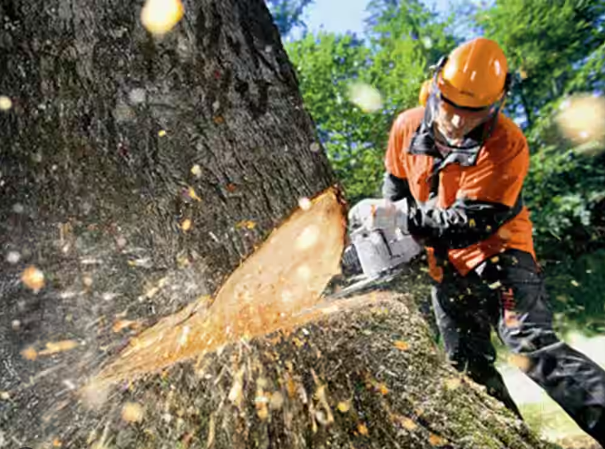Tree cutting, or deforestation, is a pressing environmental issue with far-reaching consequences. According to recent studies, an estimated 15 billion trees are cut down annually, contributing significantly to global warming and biodiversity loss. Understanding these impacts and finding ways to mitigate them is crucial for environmental sustainability. In this blog, we’ll delve into the environmental repercussions of tree cutting and explore actionable strategies to minimise its effects.
Understanding the Environmental Impact of Tree Cutting
Deforestation and Climate Change: Tree cutting plays a pivotal role in climate change. Trees act as carbon sinks, absorbing carbon dioxide (CO₂) from the atmosphere and helping to regulate global temperatures. When trees are removed, not only is this CO₂ storage lost, but the carbon stored in trees is released back into the atmosphere, exacerbating global warming. Deforestation contributes significantly to the greenhouse effect, accelerating climate change and altering weather patterns. By understanding this, we can better appreciate the importance of preserving our forests.
Loss of Biodiversity: Forests are home to a vast array of species, many of which are endangered or rely on specific forest ecosystems. The removal of trees disrupts these habitats, leading to loss of biodiversity. Species such as the Sumatran tiger and the Amazon river dolphin are at heightened risk due to habitat destruction. The intricate balance of forest ecosystems is fragile; losing trees means losing the complex web of life that depends on them. Protecting forests is not just about saving trees but preserving entire ecosystems.
Soil Erosion and Water Cycle Disruption: Tree roots play a critical role in maintaining soil stability. They anchor the soil, preventing erosion and maintaining soil health. When trees are cut down, the risk of soil erosion increases, leading to the loss of fertile topsoil and degradation of land. Additionally, trees influence the water cycle by facilitating groundwater recharge and regulating rainfall patterns. Without them, we experience altered rainfall patterns, increased flooding, and reduced water quality. The environmental repercussions are far-reaching, affecting both local and global ecosystems.
Human Activities Leading to Tree Cutting
Agricultural Expansion: Agricultural expansion is a primary driver of deforestation. As the global population grows, so does the demand for agricultural land. Large-scale deforestation occurs to make way for crops and livestock, with palm oil plantations being a prominent example. This practice not only contributes to habitat loss but also leads to increased greenhouse gas emissions. Sustainable agriculture practices are essential in reducing deforestation and protecting forest ecosystems.
Urbanization and Infrastructure Development: Urbanisation and infrastructure development are significant contributors to tree cutting. As cities expand, forests are often cleared to make way for roads, buildings, and other infrastructure projects. This encroachment into forested areas disrupts natural habitats and contributes to environmental degradation. Balancing urban growth with environmental protection requires thoughtful planning and sustainable development practices.
Logging and Timber Industry: The demand for timber and paper products drives logging activities, both legal and illegal. While regulated logging practices aim to minimise environmental damage, illegal logging often occurs in protected areas, causing severe ecological harm. The timber industry’s impact on forests underscores the need for sustainable logging practices and stronger enforcement of environmental regulations. Promoting responsible consumption and certification schemes, such as those from the Forest Stewardship Council (FSC), can help mitigate these impacts.
Strategies to Minimize the Impact of Tree Cutting
Sustainable Forestry Practices: Sustainable forestry is crucial for balancing tree cutting with conservation. Practices such as selective logging, where only certain trees are harvested, and clear-cutting minimised to small areas, help reduce environmental damage. Reforestation, the process of planting trees in deforested areas, is essential for restoring ecosystems and maintaining biodiversity. Implementing these practices ensures that forests can continue to provide ecological and economic benefits while preserving their health.
Reforestation and Afforestation: Reforestation and afforestation are key strategies for mitigating the effects of deforestation. Reforestation involves planting trees in areas where forests have been previously cut down, while afforestation refers to planting trees in areas that were not previously forested. Both approaches help restore biodiversity, improve soil quality, and contribute to carbon sequestration. Successful reforestation projects, such as the Great Green Wall in Africa, demonstrate the positive impact of these efforts.
Government Policies and Regulations: Effective government policies and regulations play a vital role in protecting forests. Laws that regulate logging, establish protected areas, and promote sustainable land use are essential in reducing deforestation. Examples of successful regulations include the Brazilian Forest Code and the European Union’s Timber Regulation. Strengthening these policies and ensuring their enforcement can significantly reduce the environmental impact of tree cutting.
Community and Individual Actions: Individuals and communities also have a role to play in mitigating deforestation. Participating in local tree planting initiatives, supporting sustainable products, and reducing paper usage can make a difference. Adopting an eco-friendly lifestyle and advocating for conservation efforts helps raise awareness and drive collective action. Every small step contributes to the larger goal of forest preservation.
Takeaway
The environmental impact of tree cutting is profound, affecting climate, biodiversity, soil health, and water cycles. By understanding these effects and implementing strategies to minimise them, we can work towards a more sustainable future. Supporting sustainable forestry practices, engaging in reforestation efforts, and advocating for effective policies are crucial steps in preserving our planet’s forests. Let’s work together to protect our environment and ensure a healthier planet for future generations.










